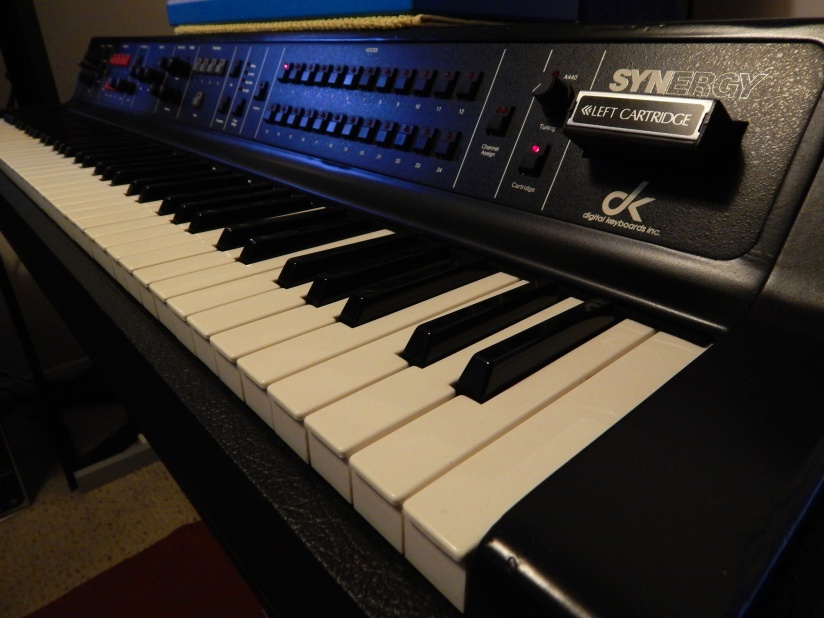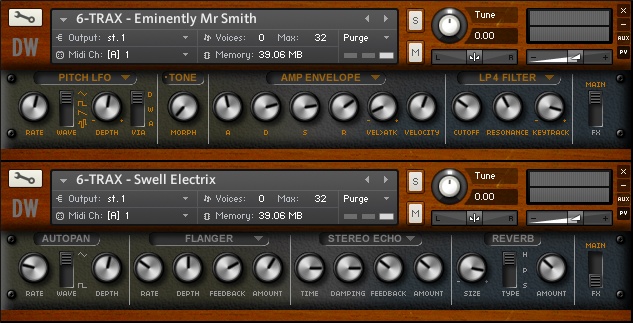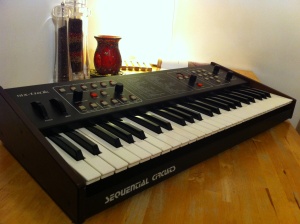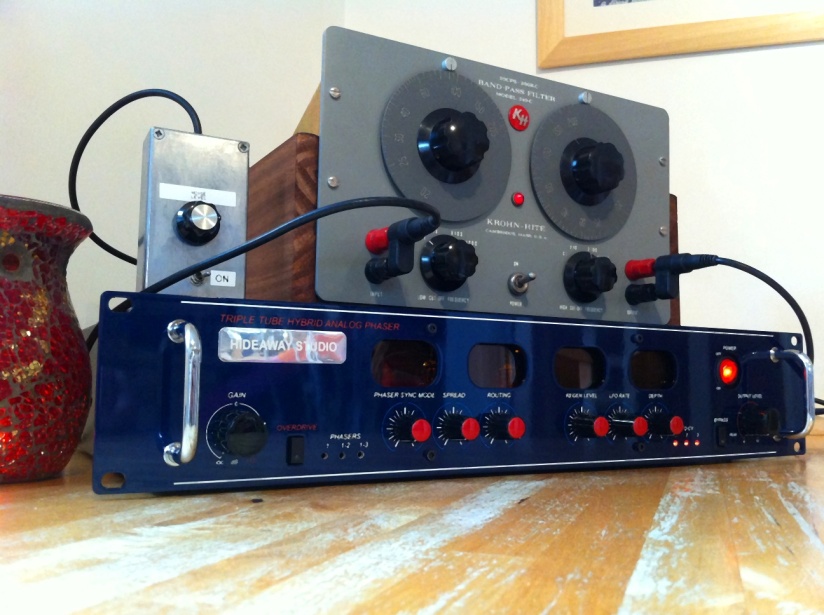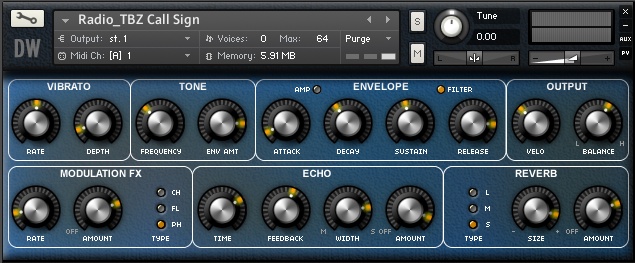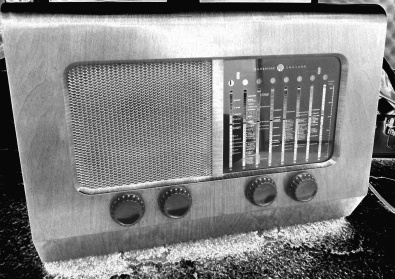“Great sounds… I love learning about instruments I never knew about. Hideaway always does a great job of digging up the esoteric. This library is great for having some real character in your eighties homages and also is very useful for ambient. There are great features here and the character is this library is what makes it a triumph. Love everything Hideaway does.”
Nicholas Johnson (via LootAudio on MICRO-5K)
“Quality Sounds… Wow, as almost every synth from Hideaway Studio, this is really excellent, lush and warm sounding. Crazy good.”
Michael Wiedmer (via LootAudio on MICRO-5K)
“Huge Sound!!… Well, as the title says, this instruments lib as huge sounds. Gorgeous ‘spacy’sounds with nice ‘lil modulation here and there, big bottom, great Filters, EQ, sat touch to colour enough patches. Each sound is carefully mastered in the way that you open it and can play with it right away. Again well done Hideaway Studio (clap clap) worth the penny for sure who likes big sounds with a great large palette for ambient stuff but not only.”
David Aknin (via LootAudio on MICRO-5K)
“THE ULTIMATE STRING PAD LIBRARY!.. Pure fun to play with this ultimate string pad library. Smooth, expressive, with depth. A lot of diverse sources are interweaved to create a very unique, powerful collection of undeniably artificial, but nevertheless superb sounding (mostly) pads. Fun to play with and inspiring to explore it… Recommended!”
Martin Juenke (via Kontakt Hub on String Collection II)
“INSPIRATIONAL SOUNDS.. You know those special instruments you occasionally come across, which have the ability to inspire and trigger a burst of ideas and creativity? The Blue Zone is one such collection. In the short time since I purchased it, these sounds have made their way into a number of tracks I have in progress for a new album of production music I’m releasing next month. There is an expansive and indefinable quality to these sounds, and Dan from Hideaway Studio has a golden ear for creating highly musical & timeless virtual instruments, with the soul & essence of the original hardware from which they are derived. Great stuff.”
Craig Richards (via Kontakt Hub on The Blue Zone)
“Polivox is a nice surprise! I expected a more generic-sounding synth instrument, but this thing has tons of character. It can do rich/evolving or cheap/oddball equally well, with a nice depth and texture throughout. The whole thing sounds more interesting and has more variety then I expected. Hideaway Studio has done a fantastic job in both the patch programming and sampling, and a lot of the character and quality of the final instrument are due to this. By the way, my Russian isn’t so good either—but when you hover your mouse over a control, it is labeled (in English, of course) in the Info pane at the bottom of the Kontakt window. In any case the interface is nicely designed and simple to learn, and the user manual is well-written, with some nice advice on playing the instrument and using the GUI.”
Loïc Forsyth (via Kontakt Hub on Polivox)
“I have to say I’ve fallen in love with the sounds you created for the Blue Zone, they’re beautifully recorded and sampled and by far my favourite Kontakt library right now.”
Neil Davidge (Massive Attack).
“These Blue Zone sound libraries are some of my favorites. Shimmering, murky, distant, distressed, and very evocative. I love sounds that feel like they’ve been through hell on their way to the speakers, and these are right on the money. Highly recommended, and such a bargain!”
Charlie Clouser, Film & TV Composer
“Like All Hideaway Studio Products… this is stellar. It is actually hard to overstate how excellent these sample libraries are. They are clearly a labor of love. They convey the “analog” spirit, while also adding originality, musicality and taste to the mix. All of the presets are done with care, but they can be tweaked considerably as well. In my opinion these are some of the very best sample libraries available anywhere and possibly the best value of any you will find.”
Stephen Barnard
“So Happy I Found This!.. I love playing strings and this instrument is one of the best if not the best I’ve found. Right out of the box, every patch is beautiful and I look forward to building on what was provided. Sonically everything is superb, as is the great efx included with the program. Even though synth-generated, some of these patches sound better than my orchestral string programs. You can tell the value of an instrument by it’s inspirational quotient. I am 100% inspired by these. Very nice software, Hideaway Studio. Looking forward to your next products. Well worth what I paid.”
KontaktHub Customer on the String Collection..
“Amazing Diverse Beauty – The snapshots in this instrument are so inspiring. You can hear the love the developer has for these old synths and all the cool outboard he uses as well to add great flavor to the sounds. Love it!”
Jacob Golden on The Blue Zone..
“BEAUTIFUL SAMPLING OF SOUNDS. I got no further than a handful of patches before I was compelled to start turning a couple (stacked) into song form. there’s inspiration in abundance here unless you lean towards the noisy and dissonant (at least that’s my initial impression). there’s plenty of pricey synths out there for that, this is rather more a treasure-trove of useful, elegant sounds, some with a very unique twist. all functions appear to automate with ease….the interface is spare but rich….and most-importantly these instruments are immaculately sampled and presented. indeed a bargain!”
Clay Colgin on The Blue Zone (via Kontakt Hub)
“Blue Zone was my very first Hideaway Studios Kontakt library. It’s the one that got me hooked! 🙂 The fact that you’re making these great libraries with all the esoteric sources and signal chains that you use, really takes the pressure off – it means I don’t have to! LOL. Seriously, its a huge thing for me.
Thanks again Dan for making such great tools out of your experiments.”
Chromatix is proving to be a popular new Kontakt library.
A review was recently published by David Baer in the on-line music magazine, SoundBytes: Chromatix Review in SoundBytes
And a selection from a string of kind feedback from customers over the past few weeks:
“Thank you for this collection! I have always wanted to play a Synergy and now I can. I have only been playing for less than an hour but already am incorporating the sounds into a piece I am working on. I also appreciate the history of the instrument you relate here. What a great job!”
Philip
“I’ve been playing around with Chromatix for some time now and I think this is the best Sample-library I’ve purchased for Kontakt. Being the restless guy I am, I usually make small tweaks to existing patches to suit my needs.
But Chromatix have made me make quite a number of sounds of my own. (If you know some of the latest releases from Hideaway you’re also aware that the way you can build sounds with different layers of samples isn’t new, So I’ve had the opportunity to make sounds this way already, in other libraries.) But there’s something about the Rhodes Chroma that appeals to my taste and makes me dive deeper and deeper into a search for new sounds. Thanks Hideaway!
I know I’ve already made a comment on this library further up, but I haven’t used any other sounds for nearly two weeks now and I thought Chromatix (or Dan) deserved a ‘thank you’.”
M:) KVR Forum
“Bought this last week -well into double figures with my Hideaway sound sets now and this is right up there with the best of them!
I’ve never actually got my hands near a Rhodes Chroma, but I have had the privilege of hearing one in concert on a couple of occasions and this sample set captures the warm, powerful sound very well indeed.
What I’ve always particularly liked about the original Chroma’s sound is its potential for complexity and movement – that layering system! Dan has captured this aspect perfectly -as always, the GUI is superb – simple and intuitive, with the layers feature adding lots of options for experimenting and creating your own sounds.
Already using some of the sounds in a new piece and starting to create my own patches!”
ChamMusic, KVR Forum
“Just to say, I’m absolutely loving the new Chromatix sounds, particularly the minute attention to detail you’ve put into every patch. Things like Trails of Light, Galileo and Unknown Territory have a wealth of things unfolding and then the decay will offer a fluttering twist to give you just an extra sparkle of magic. Wonderful stuff!”
Simon Power, Meonsound
“Sublime. majestic. flat out gorgeous. I’ve spent about an hour just previewing patches, and I’m only through the “N”s. 🙂 I can only hope to compose pieces that are worthy of these sounds.”
Stroker_ace, KVR Forum
Just received news of a nice review by David Baer on three of Hideaway Studio’s libraries at the Sound Bytes Magazine:
Some of the Many Kind Testimonials Received From Customers on Other Hideaway Studio Libraries
“This is some of the purest, strongest ear candy I’ve encountered in years.”
GreyLion, KVR Forum
“A Little Gem.. How did I miss this one? I own many Hideaway products, but somehow this one passed me by! This is a fantastic little synth – warm, rich, punchy sounds that have that certain magical ‘something’ that makes them very special! It’s based on the old Yamaha CS01, a synth that I owned and used a lot way back in the late 1980s! ZERO 1 goes way beyond the quality of sounds that the original could produce and this is all down to the post processing done by Dan at Hideaway… That touch of tube warmth and subtle tape delay movement have produced a very capable synth right across the board…use it for leads, bass, pads etc…sounds that gel very well together in the mix. A serious bargain!”
Mark Taylor, KontaktHub Customer on the Zero-1 Synth..
“Dan, I finally had the chance to purchase Synergenesis …WOW, this is even better than expected. I’ve only been playing around with the presets for an hour or so, and BOOM, Immediate inspiration! The Synergy has been my long time favorite Vintage Synthesizer for many reasons. Thank you for bringing the Synergy back to life, especially for those who have dreamed of actually playing/programming one. You will always have my support …Long Live Hideaway Studio!”
Michael
“Wow, Dan! What a fantastic story. I cannot thank you enough for going through such enormous efforts for not only preserving these unique technological wonders for the world, but also make them available for us to play them and enjoy them for such an affordable price!! Simply awesome!”
Basspartout
“Like many guitarists, I love the retro-analog world, but can’t always reside there. But thanks to Hideaway Studio’s Dan Wilson those ‘primitivo’ tones can flourish in my digital domains. Dan is easily one of my two or three favorite sound-mongers. He doesn’t just have access to the “right” gear — his recording, processing, mixing, mastering coupled with great GUI designs by Hollow Sun’s Stephen Howell are unfailingly hip and musical. At this point I don’t even audition Hideaway’s audio demos — I just buy everything Dan makes the instant he announces it. How convenient that his products are as affordable as they are awesome!”
Joe Gore [Tom Waits,Tracy Chapman, PJ Harvey, Eels, Courtney Love, DJ Shadow, etc.]
“GREAT JOB!! I love these new old sounds. Wobbly, retro, noisy as hell in some cases, worn, distressed, evocative of a bakelite world…
Death to the Giant Silver Workstation…
Just great programming from an enviable source library. Unique. Saliva-prompting. Above all a profoundly musical collection of refreshingly flawed tones.”
Harvey Jones, Synth player with Sex and Sorrow, Nadia Ackerman, and Blow Up Hollywood
“when I first came across them, I spent a whole afternoon listening through in absolute wonder. They are without a doubt, some of the best tones I have ever heard & so meticulous in their detail. I’ll look forward to using them on up coming film & media production cues and in a variety of other projects, too.”
Simon Power, Composer & Sound Designer for BBC’s Doctor Who audiobooks
“Some jaw-droppingly beautiful sounds, and highly recommended!” DavyAch, KVR Forum
“This instrument is really made with the creative musician in mind , simple , efficient, reliable and inspiring…” Claude Samard-Polikar Musical director, musician and arranger for Jean-Michel Jarre and award winning film/video games composer. www.claudesamard.com
“I have Gforce VSM, K8U, Synth Magic, Tronsonic, etc. But after playing the demo song against a few of my fav’s, I feel like hideaway really has its own identity and spin on a familiar territory. I like the sound of its playability. It just works! Check it out.” KK, Chronic Audio NYCwww.chronicaudionyc.com
“Just to let you know – I hate you. I was really only going to look at your page and admire the work. Suddenly my mouse started clicking away. Now I have spent all my “play” money and part of my food allowance. Expect me for dinner at some point if I can ever get away from my computer. This stuff is just Gorgeous!” hueynym, KVR Forum
“This is startlingly beautiful! Well done – it’s a privilege to own such a great collection of synths, and I’m happy you share them with the world. I love the sound of real orchestras, but there’s something about the synthetic voices of the 1960s and 1970s that really works well with modal and minor key pop music.” Ray Savage
“Thanks so much for yet another great sounding, great looking and very cleverly programmed instrument! The price is equally great. 11 stars (of 10)…” Tpot, KVR Forum
“I love the The Pentodian Resonator Choir library. I thought it would be good, but I seem to be reaching for it every time I need a choir-like sound at the moment.” Shangsean, KVR Forum
“Pentodian Resonator Choir … Love it, absolute no brainer!!” don1thedon, KVR Forum
“Love this thing, and not the first I bought from Hideaway and really clicked with it straight away. Keep up the good work!” Vicshere, KVR Forum
“The Bass Machine has an awesome analogue sound to it! Loving what you can do with a bit of tweaking. Congrats on a great product.”
Phil Meadley (aka Lucidity Lo-Fi)
“Sounds beautiful. If you keep makin’ them, I’ll keep buyin’ them.” bharris22, KVR Forum
“Quite pleased inventive and creative work still happens like this. Also pleased it happens to come at this price!” thisplace, KVR Forum
“a truly inspiring, deep and unique treasure trove of organic sound. In fact, I got stuck on preset #1, Apollo Strings, and time just flew…” Joachim Smith
“I bought S-VX yesterday and am liking it a lot. I have only just scratched the surface but I can see lots of warm, moving tones and plenty of mangling opportunities. Well done. I look forward to more from you. And the Multis inspired me to try out a few of my own – there are loads of possibilities.” DarkStar, KVR Forum
“just bought this (S-VX), and been playing around for a bit, and every single noise that comes out of this beast is warm, lush, and straight-up INSPIRATIONAL! i have a suspicion i’ll probably be (over)using this beast for quite some time!” Funky Lime, KVR Forum
“First, the Noble Horns would make any soundtrack maker very happy. It has exactly the right blend of “almost acoustic” and “ageless” and “epicness”. I really, really dig the “grrraaaawwwwrr” of the sound. Amalfi Strings… yum. I think you’re at something that speaks to me in the exact right words. I cannot describe it better.” Petri Alanko, Game & Film Score Composer (Xbox 360 game, Alan Wake)
“Listened to the demo, concluded it was a bloody lovely sound library and bought it on the spot. Great bargain! I think it’s a lovely set of sounds. Really. Right in the zone for the work I am trying to do. Gorgeous. You have a very good ear.” tropicalontour, KVR Forum
“Dan, I saw your website on Rekkerd.org recently and checked out your demos. I got thru the first Orbitone example and immediately bought both of your sample sets. From earthy to epic, it’s all there. What really impresses me is the warmth of the samples. I’ve had some real fun combining both the Orbitone and S-VX Hybrid patches. I think the best thing that can be said of your sample sets is that it inspires me to make music! Great work!!! Keep them coming!” Rick G
“The sounds are so human and expressive and made me want to record something/anything immediately. I think that’s a rare skill you have, to be able to create sounds of such delicacy, detail and warmth that are also eminently playable and feel so right under the fingers.” maestroeden.com





